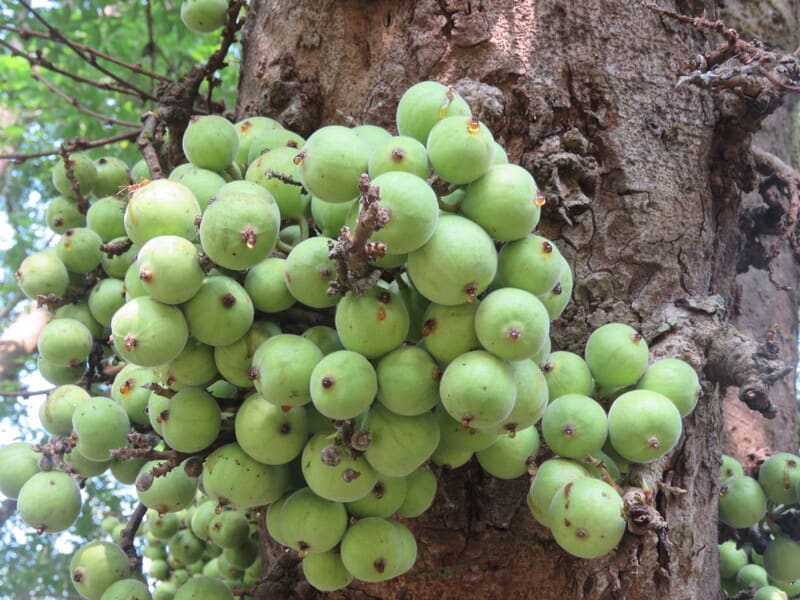Cluster fig, Gular fig, Dumar fig, Country fig, Red river fig
Ficus racemosa

🌿 Morphology
🌞 Growing conditions
🌍 Origin and family
🌾 Uses
Warning: Despite the care taken in writing this sheet, it is essential to cross-reference sources before using or consuming any plant. When in doubt, consult a qualified professional
Permaculture uses
The figs are edible and can be eaten raw or cooked. They are a good source of fiber and minerals. The bark and latex have medicinal properties and are used in traditional medicine for various ailments. It can be used for erosion control due to its extensive root system and can provide shade and shelter for livestock. The leaves can be used as fodder for animals.
Permapeople description
Ficus racemosa is a species of fig tree native to Australia and Asia. It is known for its clusters of figs that grow directly from the trunk and branches.
Botanical description
Ficus racemosa is a fast-growing, deciduous tree that can reach up to 25 meters in height. It has a buttressed trunk and a spreading crown. The leaves are ovate to elliptic, 10-20 cm long and 5-10 cm wide, with a smooth margin. The figs grow in clusters on the trunk and branches, often near the ground, hence the name 'racemosa'. The figs are red when ripe and are about 2-3 cm in diameter. The tree is monoecious, meaning it has both male and female flowers on the same tree. It is pollinated by fig wasps.
Companion planting
Little documented information exists on specific companion planting for Ficus racemosa. However, it is likely to compete with smaller plants for resources due to its size and extensive root system. It provides shade, which may benefit shade-tolerant species. Avoid planting near structures or underground utilities due to its aggressive root system.
Propagation methods
Propagation can be achieved through seeds, cuttings, and air layering. Seeds require pre-treatment to improve germination rates. Cuttings should be taken from semi-hardwood stems. Air layering is also a viable option, particularly for larger branches.
History and traditions
In India, Ficus racemosa is considered a sacred tree and is often planted near temples. The fruits are used in traditional medicine for treating various ailments such as diarrhea, dysentery, and skin diseases. Different parts of the tree are used in Ayurveda for their medicinal properties. The tree also holds cultural significance in Southeast Asia, where it is associated with fertility and prosperity.
Usage calendar
Flowering occurs throughout the year, with peak fruiting season depending on the local climate, often coinciding with the rainy season. Planting is best done during the monsoon season. Pruning can be done after the fruiting season to maintain tree shape and health.
